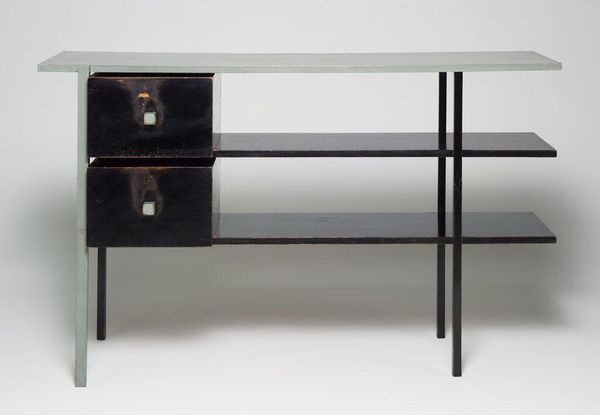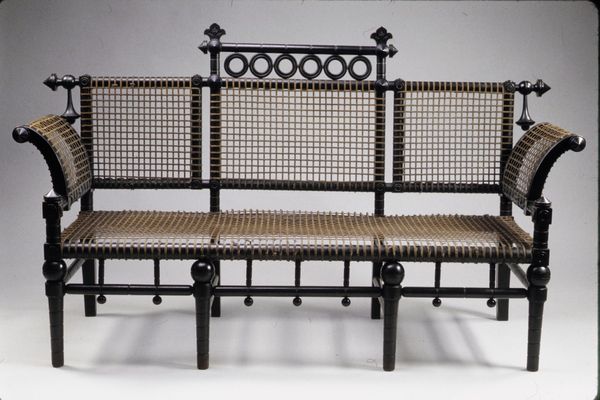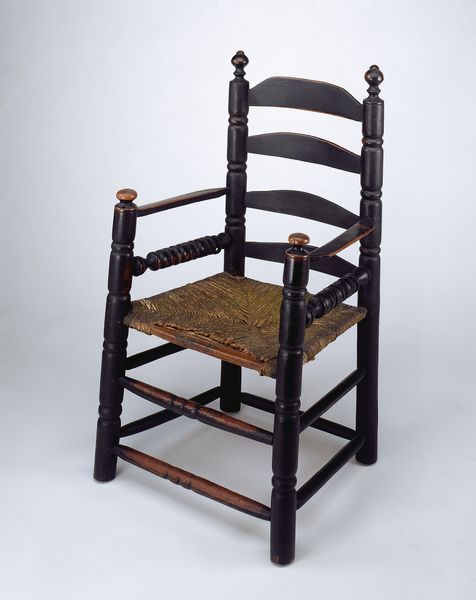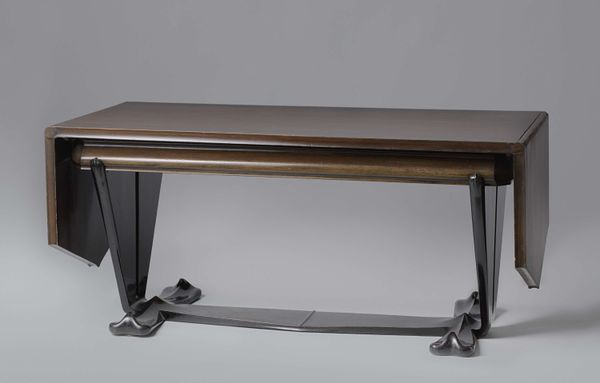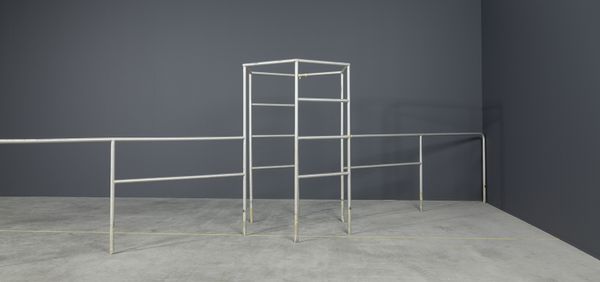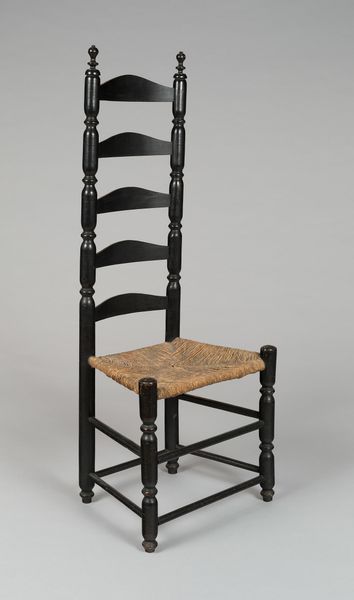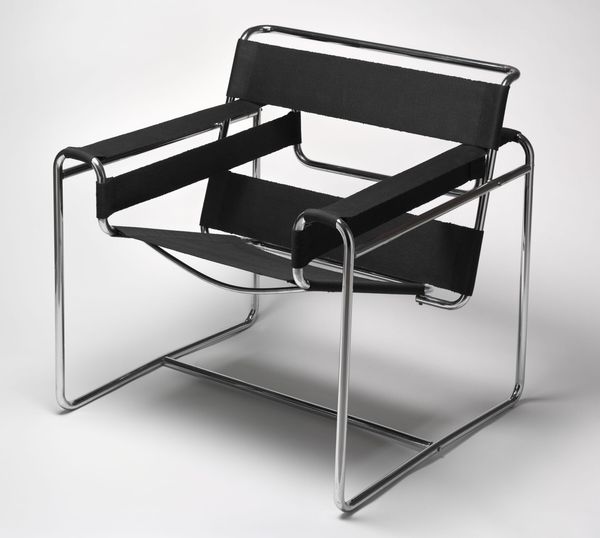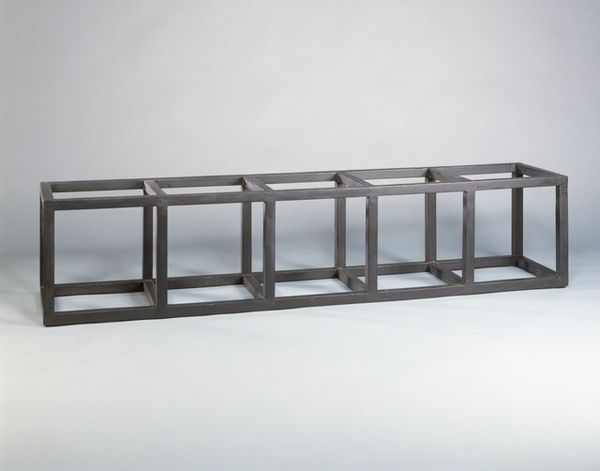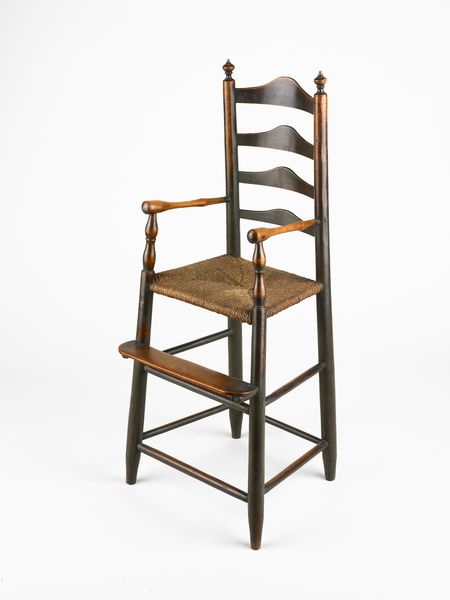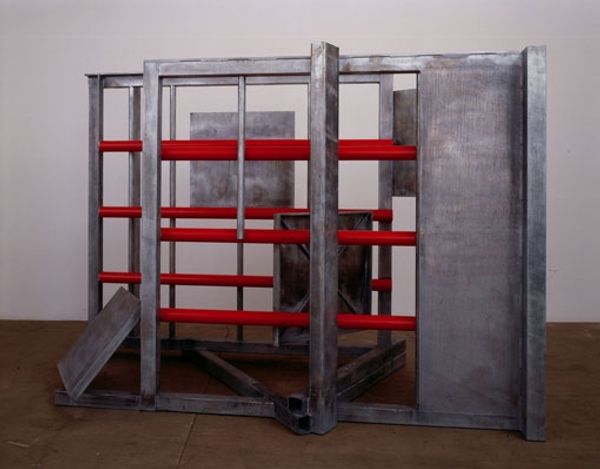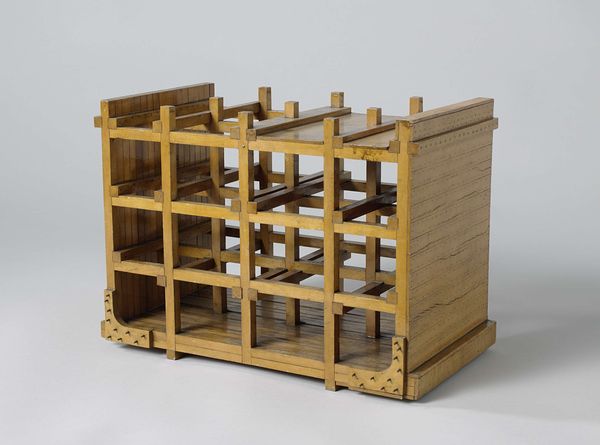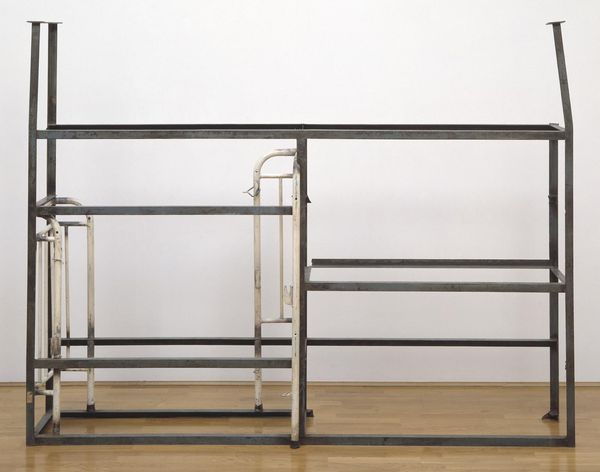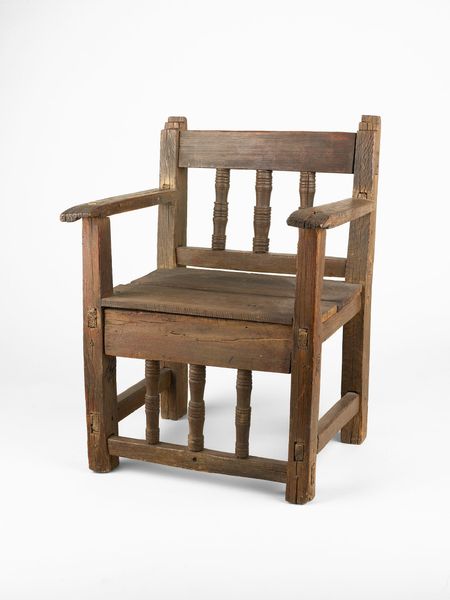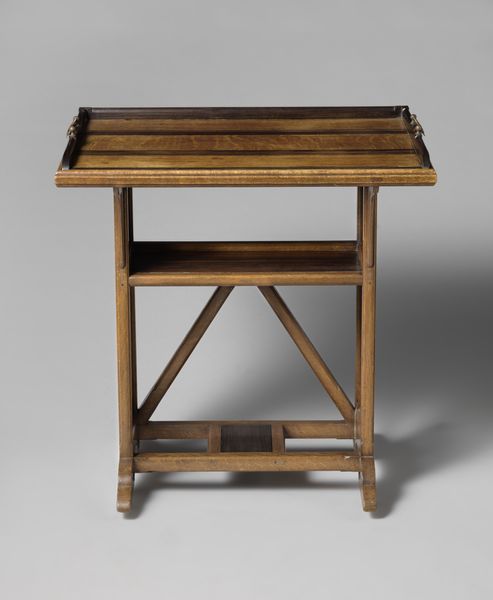
Dimensions: 181.6 × 255.3 × 50.2 cm (71 1/2 × 100 1/2 × 19 3/4 in.) (with leaves e×tended)
Copyright: Public Domain
Curator: Here we have Edward William Godwin’s “Sideboard,” crafted around 1867. It's currently held here at the Art Institute of Chicago. What’s grabbing you about this piece? Editor: Initially, the severity of it. It's so angular and almost skeletal in form. And that black... it’s giving a somber, austere vibe. You wouldn’t guess this is for storing dinnerware. Curator: Indeed! Godwin was a major figure in the aesthetic movement, and this piece shows his fascination with Japanese design. He wanted to move away from heavy Victorian styles. It was very radical for the time! Editor: That makes sense when you look at the materials and construction. This looks like stained or ebonized wood, with just the barest hint of hardware—the round metal pulls. Very practical, but also beautiful in its simplicity. I bet the craftsmanship involved in those precise angles was meticulous. Curator: Exactly. The Arts and Crafts influence is quite evident here, advocating for quality and integrity in production. It's also fascinating how Godwin designed for both high-end patrons and more middle-class markets, democratizing design, in a sense. Editor: Right. Thinking about labor practices makes you wonder who built it, how long it took, and what their working conditions were. It is so different from mass-produced furniture today. This "Sideboard" embodies design integrity from material extraction, woodworking process, assembly, labor hours, and all of the maker’s social conditions. Curator: It becomes this physical record, right? Of its historical and social contexts. Its form is definitely at odds with its function, it’s more akin to architectural form in furniture, an interesting departure. Editor: Definitely more austere than other ornate Victorian-era styles, but also richer. I think this piece made me contemplate where things come from, literally and metaphorically. Curator: It’s a testament to the way material culture, craftsmanship, and socio-economic practices intersect within a singular piece of design!
Comments
No comments
Be the first to comment and join the conversation on the ultimate creative platform.
